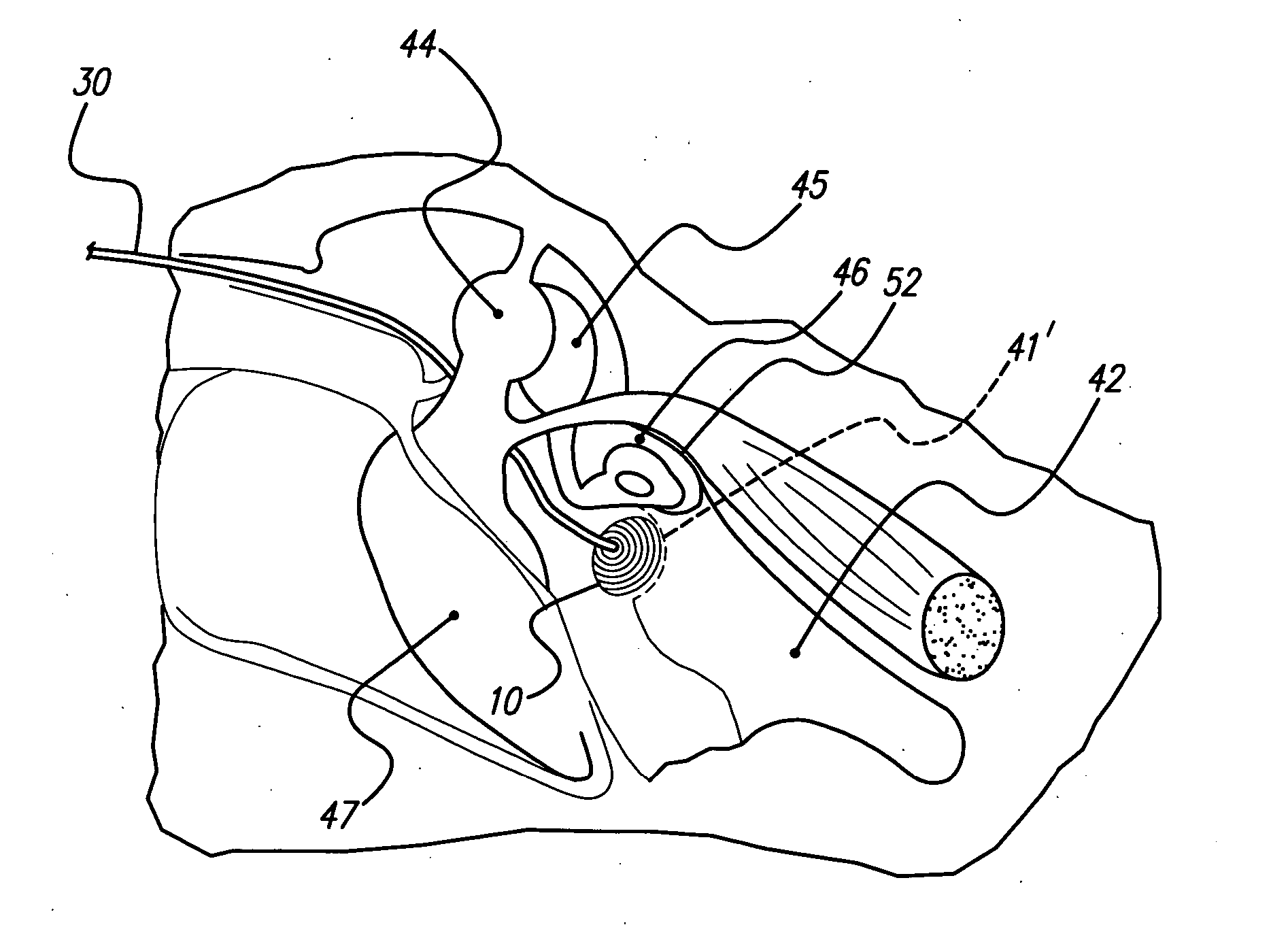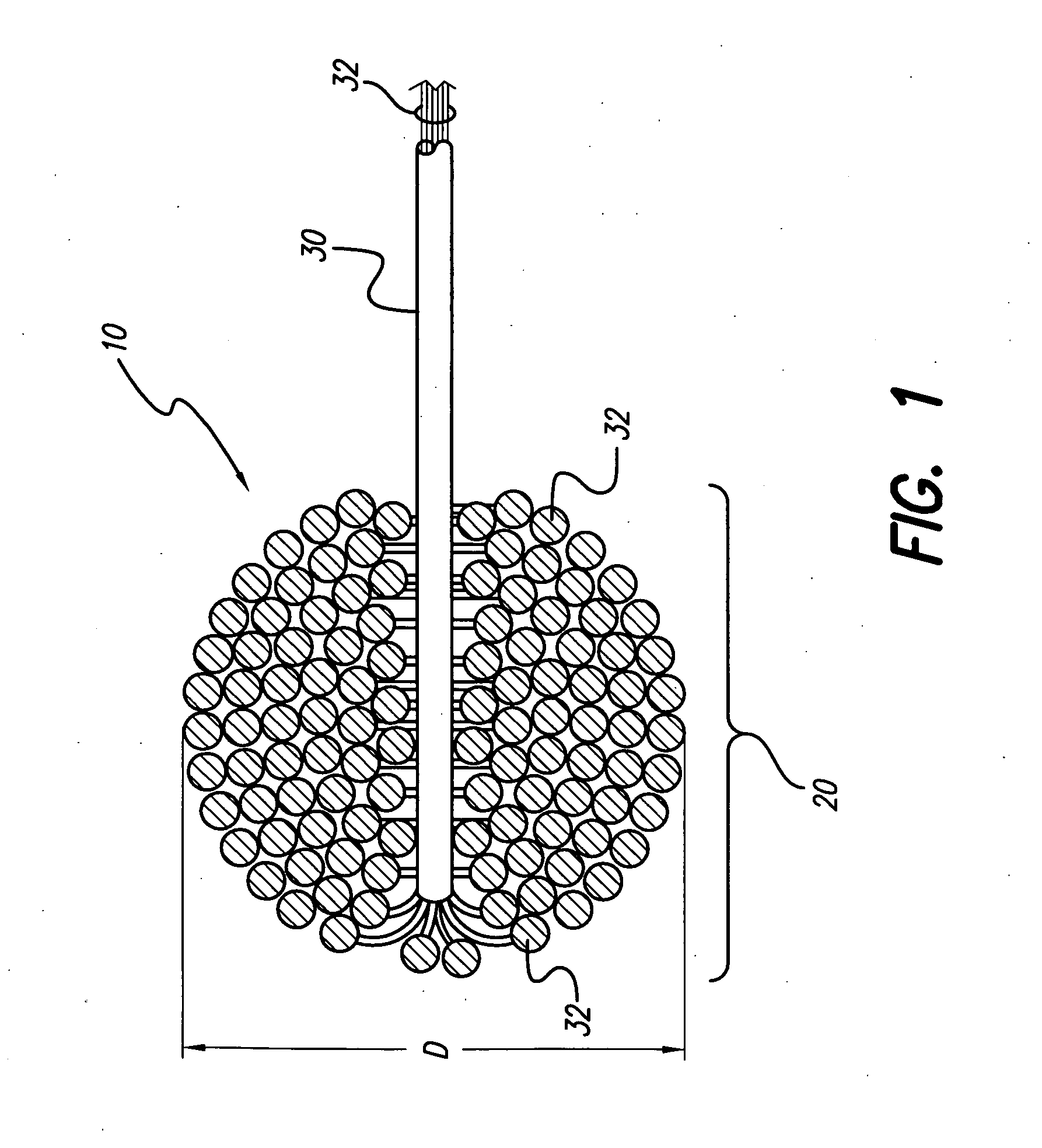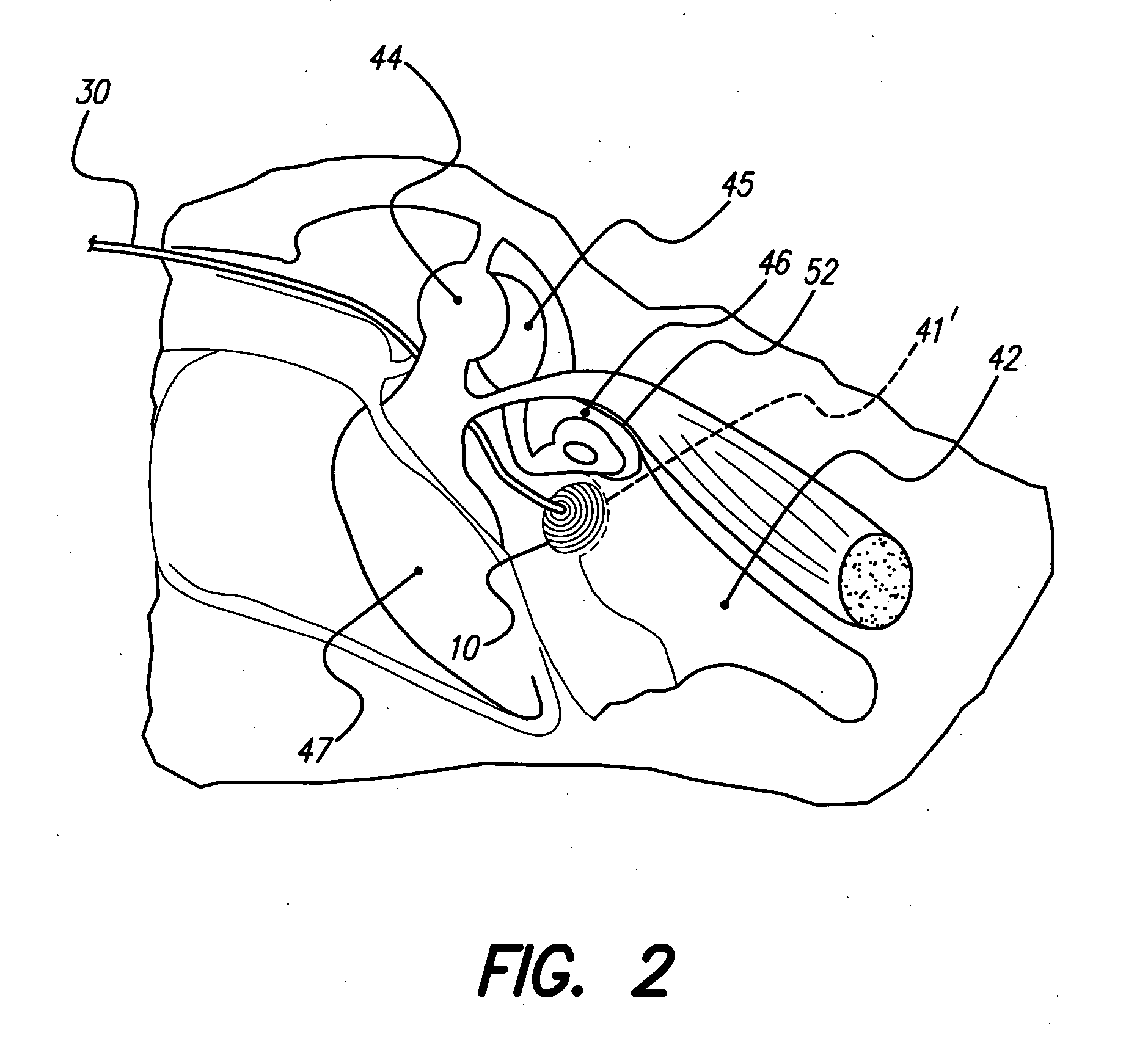System and method for preserving neuronal survival and plasticity of the auditory system prior to permanent intra-cochlear implantation
a cochlear implant and auditory system technology, applied in the field of neuronal stimulators, can solve the problems of increased risk of developing cochlear implant infections, increased risk of cochlear implant multi-channel commercialization, and reduced plasticity of the auditory system, so as to maintain or extend the plasticity of the higher auditory pathway, and improve the survival rate of neurons
- Summary
- Abstract
- Description
- Claims
- Application Information
AI Technical Summary
Benefits of technology
Problems solved by technology
Method used
Image
Examples
Embodiment Construction
[0024] The following description is of the best mode presently contemplated for carrying out the invention. This description is not to be taken in a limiting sense, but is made merely for the purpose of describing the general principles of the invention. The scope of the invention should be determined with reference to the claims.
[0025] Turning first to FIG. 1, a cross-sectional side view of a mesh, ball electrode is shown. A mesh, ball electrode 10 is made by wrapping the wires of a cable 30 around a suitable mandrel (not shown) to form a ball-shaped head 20 having a diameter “D” from 1.5 to 2.5 mm. The cable 30 is preferably made from an insulated multi-strand cable, having multiple wires or strands 32. In one embodiment, the cable 30 may be made from Teflon-insulated 9- or 11-strand Pt / Ir wires 32. The length of the wires 32 may be about 200 mm, sixty (60) mm of which forms the cable 30, forty (40) mm of which extends out from the cable, e.g., so that the wires can be connected ...
PUM
 Login to View More
Login to View More Abstract
Description
Claims
Application Information
 Login to View More
Login to View More - R&D
- Intellectual Property
- Life Sciences
- Materials
- Tech Scout
- Unparalleled Data Quality
- Higher Quality Content
- 60% Fewer Hallucinations
Browse by: Latest US Patents, China's latest patents, Technical Efficacy Thesaurus, Application Domain, Technology Topic, Popular Technical Reports.
© 2025 PatSnap. All rights reserved.Legal|Privacy policy|Modern Slavery Act Transparency Statement|Sitemap|About US| Contact US: help@patsnap.com



